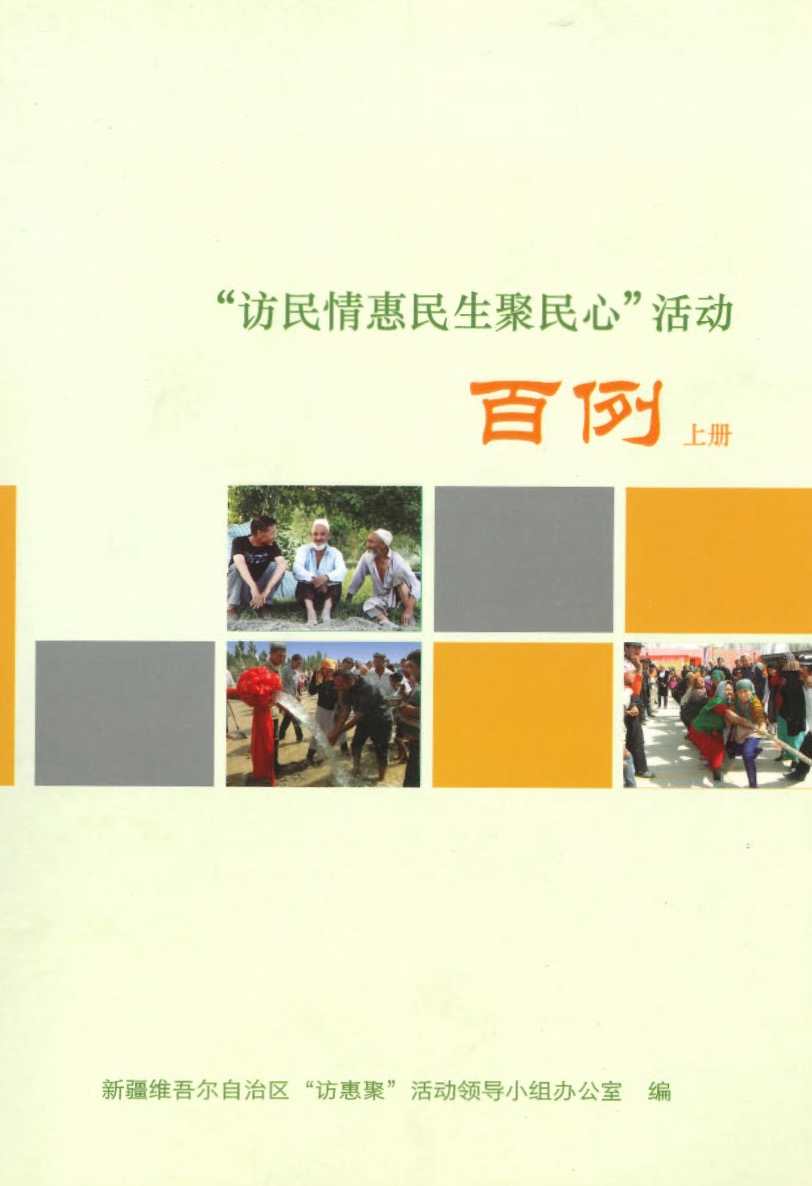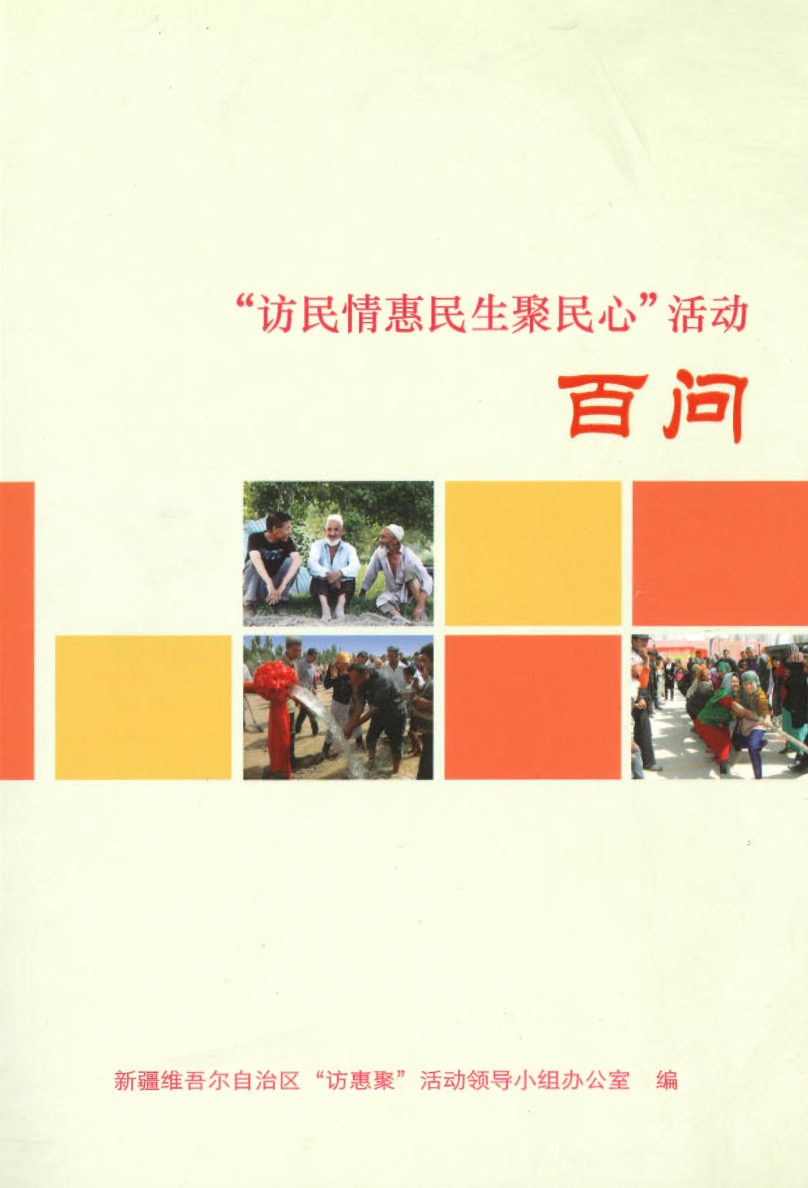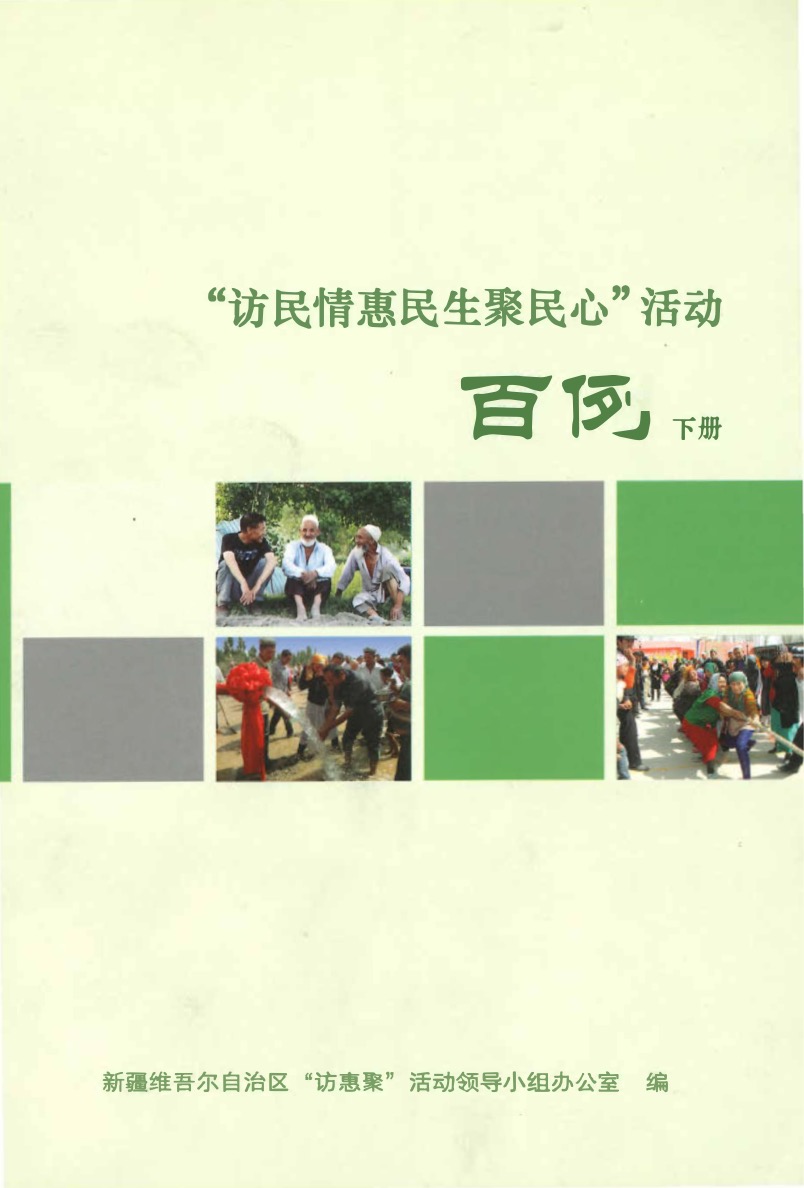Introduction
The following section is an ever-growing collaboration between volunteer translators and senior translation editors at the Xinjiang Documentation Project. We have selected chapters from three Cadre Handbooks, “Hundred Questions” [百问] and “Hundred Examples” [百例] Volumes I and II, to translate from Chinese to English. These handbooks are designed to instruct cadres in Xinjiang as they go door-to-door implementing the fanghuiju (访惠聚) campaign. They contain information about the campaign, advice for conducting interviews, and strategies for promoting Chinese national identification and eliminating ‘extremist’ influences among the province’s Muslim population. To learn more about these books and their significance in Xinjiang, please refer to our introduction “’Hundred Questions and Hundred Examples’: Cadre Handbooks in the Fanghuiju Campaign“.
Each link below will take you to a side-by-side downable Chinese to English translation of each chapter that has been selected. You can click on the image of each book to take you to the full downable Chinese text.
百问 (Hundred Questions)
“Hundred Questions” [百问], covers the overall mission of fanghuiju, offers interpretations of policies, analyzes theory, and instructs on how to deal with complex situations that may arise. It is divided into 200 chapters, each phrased as a question and attributed to a particular work team or Party institution. For example, the office of the lead group carrying out Kezhou’s fanghuiju campaign was responsible for a chapter titled “How to Make ‘Grassroots Preachers’ a Force for Educating and Disseminating Propaganda to the Masses?” (如何让‘草根宣讲员’成为宣传教育群众的有生力量?).
百例 上册 (Hundred Examples Volume One)
“Hundred Examples” [百例], is divided into two volumes, a complementary collection of 200 chapters also attributed to a diverse group of organizations. The “Hundred Examples” showcases “innovative practices and successful cases” (创新做法、成功案例) for other cadres to emulate as they carry out the fanghuiju campaign.
 |
29. Better Foundation, Management, and Utilization of the “Home for Women” |
百例 下册 (Hundred Examples Volume Two)
“Hundred Examples” [百例], is divided into two volumes, a complementary collection of 200 chapters also attributed to a diverse group of organizations. The “Hundred Examples” showcases “innovative practices and successful cases” (创新做法、成功案例) for other cadres to emulate as they carry out the fanghuiju campaign.

